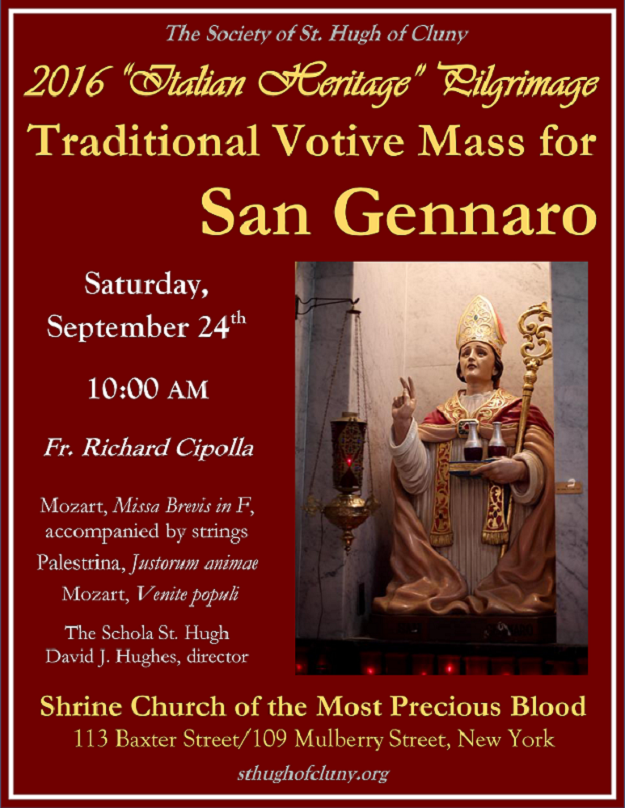English: The Martyrdom of Saint Januarius in the Amphitheatre at Pozzuoli.
Date: Circa 1636.
(Wikimedia Commons)
Text from The Saint Andrew Daily Missal,
unless stated otherwise.
Saint Januarius (San Gennaro) and his Companions.
Martyrs.
Feast Day 19 September.
Double..
Red Vestments.
"At Pozzuoli, in Campania, Italy," says The Roman Martyrology, "The Feast of The Holy Martyrs, Januarius (San Gennaro), Bishop of Beneventum, Festus (his Deacon), Desiderius (his Lector), Socius (a Deacon of The Church at Misenum, Proculus (a Deacon of Pozzuoli, Eutychius, and Acutius, who, after having been bound with chains, were cast into prison and beheaded, under Emperor Diocletian (305 A.D.).
The body of Saint Januarius was taken to Naples and honourably buried in the Church where his blood is still preserved in a glass phial. When the phial is placed near the head of the Holy Martyr, the blood liquefies and bubbles as if it had just been shed."
This Miracle, known as The Miracle of Saint Januarius, still takes place. The blood, contained in two glass phials where it is coagulated into a dark-red mass, increases in volume and weight; on liquefying, it becomes bright-red, while the surface is covered with bubbles, wherefore it is said to boil.
The Miracle takes place three times a year: During the Feast of May, lasting nine days, from the First Sunday in the Month; in September, during eight days, from 19 September to 26 September; and on 16 December.
Mass: Salus autem.
Gospel: Sedénte Jesu.
















